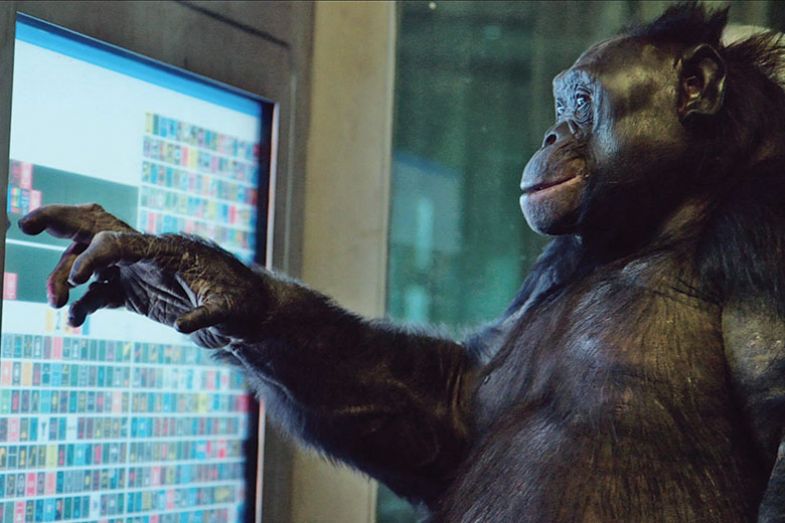“If our cats could speak to us…would they tell us that the food we are giving them is making them feel happy?” asks an advert for healthy cat food on my timeline. Its creator would no doubt be unimpressed by Ludwig Wittgenstein’s notorious pronouncement that if a lion could speak, we couldn’t understand it. But what are the criteria for determining whether a creature can speak, what does the ability to understand another being amount to – and who exactly are “we” meant to be, anyway? Are animal behaviourists and lion tamers included among us?
Eva Meijer’s new book – first published in the Netherlands as Dierentalen in 2016 and now out in a beautiful English translation by Laura Watkinson – offers answers to these and other related questions by appealing to a plethora of real-life examples. Despite its provocative subtitle, Animal Languages presents a refreshingly balanced and sensible approach to animal communication that will appeal to anyone with an interest in other species. Meijer demonstrates that a proper understanding of Wittgenstein’s remark is compatible with the view of cognitive ethologists such as Marc Bekoff, who maintain that if only the Austrian philosopher had got off his armchair and spent some time with animals he would have seen that they do indeed communicate and that we can understand them, if we only bother to try.
Wittgenstein’s insight, as Meijer points out, is that in order to understand an animal, it isn’t enough to hear the sounds they make, or observe their bodily movements; we must also study their practices closely and learn to share our lives and habitats with them, a feat much easier to achieve with, say, a dog than with a tiger. Those sceptical about the possibility are reminded that “it is quite conceivable for a human and her dog to have more in common – preferences, understanding, how well they know each other, how they respond to certain events – than a person does with a random neighbour. All sorts of connections are possible – the likelihood of a shared language is not dictated by fur or a tail.” The shared language referred to here is not in itself a guarantee of mutual understanding, however, for “while human language can play an important role in understanding others, it can also deceive, and there is no reason why belonging to a different species should hinder understanding or knowledge of the other”.
Although Meijer is not an animal scientist (she describes herself as “an artist, writer, philosopher, and singer-songwriter”), she has clearly spent a lot of time with non-human creatures, and even more reading works by those whose job it is to do so. Her elegant prose is intentionally free of any detailed philosophical or scientific debate (this is provided in her accompanying academic book, When Animals Speak: Toward an Interspecies Democracy, published by New York University Press last year), making the volume more accessible to a wider audience. The book’s brief and at times rather loose arguments are thus unlikely to convince unsympathetic academics with complicated theories of mind and language – but so much the worse for them, I say! Just the other week I had to abandon reading a book about the alleged silence of animals because my pets were making too much noise for me to concentrate. If there is one thing that contemporary debates on animal minds and language can use, it is much more observation and far less theory.
Animal Languages accordingly combines Wittgenstein’s pragmatic approach to other minds with informed science to present the reader with a curated cornucopia of animals that communicate with one another and humans in a startling variety of ways. These include Alex the existentialist parrot, Batyr the talking elephant, Kanzi the Pacman-playing bonobo, Binti Jua the empathetic gorilla, Hans the body-reading horse (originally mistaken for a mathematician), Washoe the signing chimpanzee, Salty the gamester dog, to name but a few, not to mention streams of nameless dolphins, bats, cats, pigs, geese, sheep, buffalo, frogs, deer, hippos, dingoes, camels, lobsters, rabbits, chickens, snakes, octopuses and laboratory mice.

Meijer reminds us that “many people make a distinction between communication and language, and believe that animals are capable only of the first, while humans can do both”. Is it not anthropomorphic to attribute language to non-human animals?, they smugly ask. Some such as Bekoff bite the bullet and hold that it is perfectly respectable, and perhaps even inevitable, to be anthropomorphic. We have no choice but to use human concepts and words to describe non-human phenomena. What would be wrong, from this point of view, is to think that animal language must be just like human language in order to be worthy of the name. As Meijer puts it, “instead of defining whether non-human animal forms of communication fit into the frame of what humans define as ‘language’, we should instead pay attention to what they are saying, and begin investigating what language is and could be from there”.
Language itself deceives us into thinking that there is one single specific thing we are interested in (and can have reasonable disagreements about) when asking whether a particular species has language. We do not even mean exactly the same thing when we use the word “talk” as when we use the word “speak” (as I write this, “animals talk” has approximately 377 million results on Google, compared with only about 238 million for “animals speak”). The truth is that we may have a number of distinct things in mind when asking such vague questions as whether animals have language – for example, do any of them use sounds or movements to communicate thoughts, fears, desires or intentions? If so, do these amount to a primitive system of symbols? Is such communication verbal? Can they be said to talk to one another even if they cannot speak?
Official definitions of “language” on offer range from the “body of words and of methods of combination of words, used by a nation or people” to transferred senses applying to “the inarticulate sounds used by the lower animals” and “numerous systems of precisely defined symbols and rules for using them that have been devised for writing programs or representing instructions with data”. This is all before we even get to body language, sign language and so on. To ask whether these are really languages is as pointlessly vague as to ask whether mathematics, Morse code or html are languages. Unless one specifies why one is asking, attempts to answer such questions give rise to nonsensical debates, such as whether birds are better at language than computers.
Humans are not the measure of all things, they are the measure of all things human. Judging everything with a human yardstick leads to absurdities such as the willingness to readily ascribe language to parts of our brains, while denying it to cats and dogs. Yet, “from an evolutionary perspective”, Meijer notes, “it would be strange for humans to have language and for other animals not to have something similar”. Animal Languages is a must-read, not only for those interested in human-animal relationships but for anyone who wants to better understand the creatures that humans share the earth with, and this should include all of us.
Constantine Sandis is professor of philosophy at the University of Hertfordshire. He is currently writing a book on understanding others for Yale University Press and another titled Wittgenstein’s Lion for Bloomsbury.
Animal Languages: The Secret Conversations of the Living World
By Eva Meijer; translated by Laura Watkinson
John Murray, 288pp, £14.99
ISBN 9781473677678
Published 14 November 2019
The author
Eva Meijer is a postdoctoral researcher at Wageningen University & Research in the Netherlands.
She was awarded a PhD in philosophy for a thesis titled “Political Animal Voices” by the University of Amsterdam in 2017; the work also earned the Praemium Erasmianum Dissertation Prize in 2018. She has taught animal ethics at Amsterdam and is now developing her earlier research in a four-year project about non-human animal agency in the Anthropocene.
As a philosopher, Meijer writes columns for the Dutch newspaper Trouw and chairs the Dutch Research School of Philosophy’s study group on animal ethics. Yet she is also an acclaimed artist, novelist and singer-songwriter who has released four albums and performed across Europe and in the US. She has worked in media including drawing, photography, video, performance and installation art, and even toys for pigs. And her eight books have been translated into 16 languages.
Het vogelhuis, Meijer’s third novel, published in Dutch in 2016, tells the story of an English woman who decides to reinvent herself by leaving London and devoting her life to studying the birds she lives among. It also became her first novel to be published in English, as Bird Cottage, in 2019.
Along with other novels, Meijer has published a book on political animals, De soldaat was een dolfijn (2017), which was awarded the 2018 Hypatia Prize from Hypatia: A Journal of Feminist Philosophy, and a philosophical investigation into depression, De grenzen van mijn taal (2019), which is due to be published in Polish, Turkish and German as well as English. In 2017, her writings to date won her the Halewijn Prize, which is awarded annually by the Dutch city of Roermond for work that deserves greater recognition.
Matthew Reisz
后记
Print headline: Straight from the horse’s mouth




